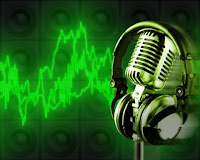
This area of dictation and recording audio or video is crucial for transcription. I have transcribed many audio files that were barely audible. The worst was some medical dictation in a room full of echoes and someone sneezing and coughing right into the microphone (perhaps the camera person?). I had to listen at full volume, and when the person sneezed or coughed into the mic, my hearing went dead for 15 to 20 minutes each time! I actually lost some of my hearing during the course of transcribing for those people, and that's not worth any amount of payment! Hearing is priceless.
To avoid audio problems, you need to check the following:
1. Do you have the best quality microphones that you can afford? It is worth the investment.
2. How close or far away are the people speaking from the mic? They need to be a comfortable distance away, and this needs to be tested several times in the actual venue before you begin your recording to make sure it's not too soft or too loud and distorted.
3. Turn off phones, alarms, radios, or any other electronic or noisemaking devices so they won't interrupt your recording or obscure the voices. You'd be surprised how many people try to talk over a ringing phone or a room full of people talking, laughing, or shouting.
4. Make sure you're talking slowly and articulately. If your recording is an interview, repeat what the interviewee said for the transcriptionist if you could tell they were mumbling or stumbling. This will help the transcriptionist tremendously.
5. If you're making a video recording, make sure you mic the people who are speaking up close. If the mic is on the video camera, then the loudest person will be the camera person--not always your intention! Using lapel microphones is very helpful in videoing a conference or group, and if you must, pass a microphone around and make sure the person is holding it before they start talking or until they are finished. A common tendency is to let the voice trail off at the end of a sentence, or be passing the mic to the next person while still finishing a sentence. Believe me, it's very difficult to transcribe what that person is saying if they do that.
6. If you're using Voice Recognition Software, the person dictating must have great English speaking skills and a large vocabulary. If they don't, you will get inferior documents full of grammatical mistakes as well as unintelligible words. Accents are a problem with VRS. I wouldn't recommend using this type of software. You will still have to pay a transcriptionist to proofread and edit your transcripts even after they are done. It's just not cost effective.
7. Lastly, just try to remember the transcriptionist when you're recording. Think about how easy or hard it is to hear what you're saying and adjust accordingly. Your transcriptionist will love you for this!






